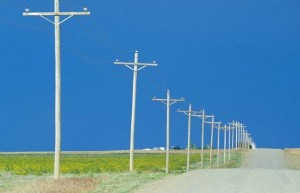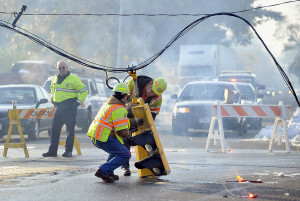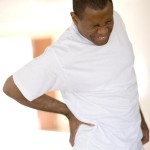02 Mar Acupuncture – A Brief Introduction
Although acupuncture has a history of development and application over thousands of years as part of the holistic medical system of Traditional Chinese Medicine (TCM), it is still relatively new in North America. It was only introduced to, and received here in the mid-1900s. Many people in the western world are still unclear what acupuncture is or how it can help sustain flourishing health and quality of life.
First, it is important to understand the starting point from which TCM approaches wellness. In TCM, it is not the disease or the symptoms that are treated. Rather, it is the whole person who is treated. This is a subtle, yet crucial difference. All symptoms are seen as connected and related, even if it seems illogical from a western medical perspective.
Illness, pain or unwanted symptoms are understood to be manifestations of disharmony that have caused blockage and imbalance in the human being’s ecosystem, the natural flow of vital energy and blood.
What is it? Acupuncture uses fine, hair-thin, sterile disposable needles inserted at specific acu-points along the body to tap into invisible energy pathways. By tapping into these energy pathways or meridians, blockages are unblocked and balance is restored in the body.
The intent is to induce a mild temporary sensation of tingling, numbness, soreness, heaviness, achiness, warmth or a radiating sensation around the acupoint. Feeling any of these upon needling means the “Qi” (pronounced “chee”, and means “vital energy”) has been stimulated to unblock the meridian pathway. The sensation should dissipate within several seconds after needle insertion. If needling did not elicit any of these sensations, the benefits of acupuncture are significantly less (see Research article in the Canadian Medical Association Journal).
How does it work? One way to understand how acupuncture works is to view the meridians transferring vital energy in the body as similar in function to the way our hydroelectrical power system works. Our body’s internal energy pathways are like the electrical power lines alongside roads – they both transmit very powerful, invisible energy that is essential for the functioning of larger systems. The acu-points then are like the electrical power poles.
When electrical power lines and poles have deficient energy running through them, or they sustain damage through collisions, weather, and normal wear and tear, traffic lights cannot work. Congestion results along highways and city streets. The longer the damage is left without being repaired, the more traffic congestion builds up into outlying neighbourhoods. Also, the greater the potential for further dangerous consequences to occur, such as spontaneous fires and very agitated, upset drivers.
Like traffic congestion occurs from damaged transmission power lines and poles, blockage in the body’s meridians also results when the circulation of Qi and blood is compromised by the following parallel causes:
1. Physical injury – falls, sprains, strains, fractures, whiplash
2. Emotional, mental and childhood traumas
3. Unbalanced, improper diet for the season or body constitution
4. Repressed or unexpressed emotions – namely worry, grief, fear/shock, anger and hyperactive joy (i.e. a kind of mania)
5. Environment and weather factors
6. Physical or mental overwork, and
7. Age
When blockage in the body’s meridians is not immediately repaired by releasing it through acupuncture or other healing methods, the blockage can expand to other areas and cause further harm such as spontaneous internal “fires” like canker sores, rashes, bleeding gums, gout, acute onset of allergies or asthma, fiery emotions, etc.
Furthermore, long-term blockage of circulation in one area leads to deficient supply of energy and blood going to another area.
 Just like unrepaired electrical power lines lead to stagnant traffic, if people don’t listen to their body and deal with the onset of mild signs when they first occur, unattended blockage worsens, leading to more pain, weakness and other symptoms or diseases.
Just like unrepaired electrical power lines lead to stagnant traffic, if people don’t listen to their body and deal with the onset of mild signs when they first occur, unattended blockage worsens, leading to more pain, weakness and other symptoms or diseases.
So if you experience pain or other symptoms of discomfort, consider that there may be blockage somewhere in your meridians and listen to your body’s call for healing attention.
Who should avoid it? There is no specific category of individuals who should avoid acupuncture although greater precautions must be taken with the very elderly and pregnant women. Also, for people who have conditions of pure deficiency or whose health is extremely weak and show no signs of excess, they often require many more acupuncture sessions before noticing positive changes in their health than if they were to use herbal medicine, which more quickly remedies cases of pure deficiency.
This is because in order for acupuncture to effectively stimulate the body’s Qi and blood flow, the individual must have enough source Qi and blood in the first place. Examples of pure deficiency include anemia, anorexia, late stages of diabetes, post-surgical recovery, post-delivery recovery, etc.
Who can it help? Acupuncture can help those with asthma, allergies, arthritis, acne, hives, eczema, pregnancy preparation, infertility, menopause, acute/chronic pain, urinary tract infections, irritable bowel syndrome, Crohn’s, ulcerative colitis, canker sores, PMS, depression, anxiety attacks, shingles, sinusitis/rhinitis, bleeding gums, gout, stress, frozen shoulder, insomnia, teeth grinding, headaches/migraines, lower back pain, cancer patients receiving chemotherapy to mitigate its side effects, and much more.
